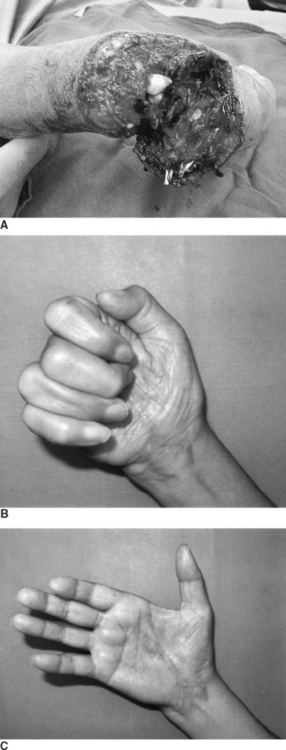CHAPTER 73 EXTREMITY REPLANTATION: INDICATIONS AND TIMING
The years since the first successful replantation of an arm in a 12-year-old boy by Malt and McKhann1 in 1964 were marked by evident progress in the reconstructive surgery of limbs. That first revolutionary report was followed by the reports of revascularization of incompletely amputated fingers by Kleinert and colleagues in 19652 and the first successful thumb replantation by Komatsu and Tamai in 1968.3,4 The evolution of microsurgical techniques and an accumulation of experience worldwide, along with the organization of specialized centers, has made replantation of completely or partially amputated extremities a generally accepted treatment of choice.
CLASSIFICATION
All traumatic amputations of extremities are classified based on:
Types of amputations are classified by anatomic criteria. The complete type is clearly defined by its term, that is, an amputation without any tissue connection between amputated and proximal parts of the extremity. An incomplete, or partial amputation is where most of vital anatomic structures are disrupted, and blood circulation in the amputated part of the extremity is absent; without replantation the amputated segment will neither survive nor be functional (Figure 1).
More precise classification of upper extremity amputations and replantations is based on the “zonal” principle, where the upper extremity is divided into six anatomic zones (Figure 2):








